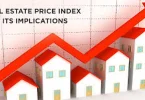The commercial real estate (CRE) market is entering a transformative phase, and commercial real estate trends 2026 reveal a future shaped by technology, flexible work patterns, sustainability pressures, and evolving consumer behavior.
Whether you’re an investor, business owner, or property developer, understanding these upcoming trends will help you make smarter decisions and stay ahead in a competitive market.
1. Rise of Hybrid Workplaces and Flexible Spaces

The shift toward hybrid work is pushing companies to redesign their office strategies. Instead of large, fixed office spaces, businesses are adopting:
- Smaller headquarters
- Satellite offices in suburban areas
- Flexible co-working spaces
By 2026, the demand for collaborative, tech-enabled, and wellness-focused workplaces will increase as companies try to balance remote work with in-office productivity.
2. Boom in Industrial and Warehousing Facilities
E-commerce continues to reshape logistics, and 2026 is expected to see the highest demand for industrial spaces such as:
- Smart warehouses
- Last-mile delivery hubs
- Cold storage facilities
Retailers and manufacturers are investing in automation, robotics, and AI-driven inventory systems, making industrial real estate one of the strongest sectors.
3. Retail Evolution: Experience-Driven Spaces
Traditional retail is slowing, but experiential retail is booming. By 2026, stores will be more about interaction than inventory. Trends include:
- Hybrid online-offline shopping
- Pop-up retail concepts
- Entertainment-focused shopping centers
Brands will use physical stores to build customer experiences rather than simply display products.
4. Sustainability and Green Building Investments
Sustainable real estate is no longer optional. Governments and corporations are pushing for:
- Net-zero buildings
- Energy-efficient HVAC systems
- Solar and smart-energy solutions
- Green certifications (LEED, WELL)
Properties with eco-friendly features will enjoy higher occupancy and rental premiums in 2026.
5. AI & PropTech Reshaping the Market
PropTech adoption will accelerate dramatically by 2026. Investors and property managers are using AI for:
- Predictive maintenance
- Smart energy management
- Automated tenant services
- Real-time data analytics
Buildings will become more automated, secure, and cost-efficient.
6. Rising Demand for Healthcare and Senior Living Facilities
With aging populations and increasing medical needs, these sectors will grow:
- Senior housing
- Assisted living facilities
- Medical office buildings
- Rehab centers
These properties offer stable, long-term returns—making them ideal for risk-averse investors.
You may also like it:
Housing Market Trends and Updates: 2026 Insights
First Time Home Buyer Guide | Step-by-Step Buying Tips
Latest Real Estate Trends 2026: Key Insights & Opportunities
7. Growth in Mixed-Use Developments

Cities are encouraging developments that combine:
- Residential
- Retail
- Office
- Entertainment
By 2026, mixed-use spaces will dominate urban planning due to their convenience and ability to attract foot traffic.
8. Suburban Commercial Growth
Businesses and investors are shifting attention from major cities to suburban hubs because of:
- Lower development costs
- Better infrastructure
- Remote work migration patterns
This migration will create new opportunities in suburban retail centers, offices, and logistics hubs.
9. Increasing Investor Focus on Stability
Given global economic fluctuations, investors are expected to prefer:
- Low-risk, income-producing assets
- Long-term tenancy buildings
- CRE properties in stable, high-growth markets
Portfolio diversification will be a key strategy in 2026.
Conclusion
The commercial real estate trends in 2026 highlight a market undergoing significant transformation. From the rise of hybrid workplaces and flexible office spaces to booming industrial, healthcare, and mixed-use developments, investors and developers must adapt to changing demand patterns. Sustainability, PropTech, and technology-driven solutions are reshaping building operations and tenant expectations, while suburban hubs and experience-driven retail spaces are creating new opportunities.
By staying informed about these emerging trends, investors can make strategic decisions, minimize risks, and maximize long-term returns. Whether you are seeking stable income-producing assets or growth-oriented investments, understanding these trends will be essential to thriving in the commercial real estate market of 2026 and beyond.
FAQs (Commercial Real Estate Trends 2026)
1. What are the top commercial real estate trends 2026?
The major trends include hybrid workplaces, industrial warehousing growth, green buildings, PropTech adoption, mixed-use developments, and rising demand for healthcare facilities.
2. Is commercial real estate a good investment in 2026?
Yes. Industrial, healthcare, and mixed-use sectors will offer strong returns due to high demand and stable occupancy.
3. Will office spaces still be in demand in 2026?
Yes, but the focus will shift to flexible, collaborative, tech-enabled office spaces rather than large traditional setups.
4. Which commercial sectors will grow the fastest?
Industrial warehouses, healthcare real estate, and mixed-use developments are expected to show the highest growth.
5. How will technology impact commercial real estate in 2026?
AI, automation, digital twins, IoT sensors, and smart building systems will streamline operations and improve building efficiency.





